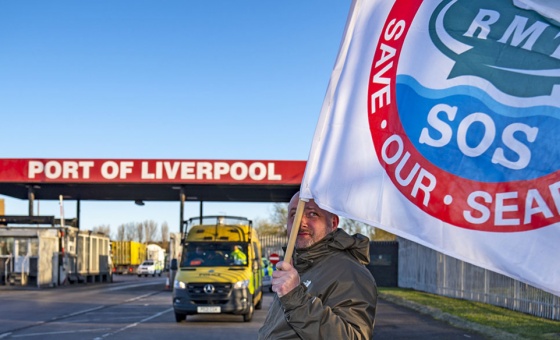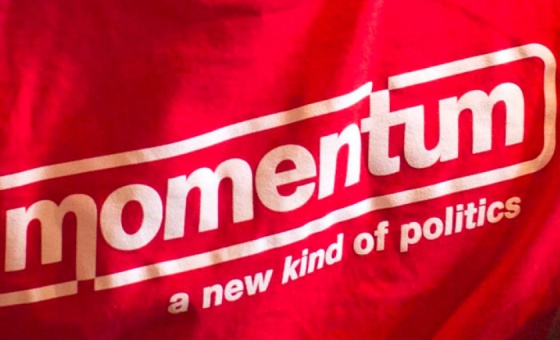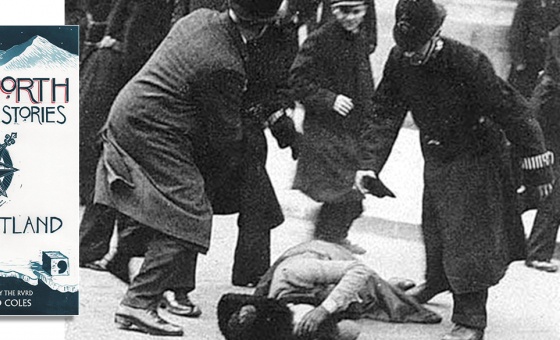This is the last article you can read this month
You can read more article this month
You can read more articles this month
Sorry your limit is up for this month
Reset on:
Please help support the Morning Star by subscribing here
BELIEVING that the term “artist” all too often signified a person whose work was divorced from social responsibility, Jo Spence (1934-1992) referred to herself as a “cultural sniper.”
It’s a term that aptly describes her diverse activities, which were united by socialist and feminist subversions of the sociopolitical status quo.
Nowadays known primarily for her photographic works, Spence was also a mover and shaker through her writing, teaching, activism and organiser of radical exhibitions.
An Essex war child, born to parents who were both factory workers and trade unionists, Spence left school at the age of 15 for secretarial college. She went on to work as a commercial photographer’s general dogsbody before going on to photographing portraits and weddings.
But when she discovered Marxism and feminism, Spence queried the profession’s competitive individualism and its dishonest commodification and idealisation of its subjects.
Influenced by Dziga Vertov, Bertolt Brecht and John Heartfield, in 1974 she co-founded the Photography Workshop Ltd with the photographer-historian Terry Dennett as an independent, open- resource centre.
They set out to provoke criticism of sociopolitical norms by reordering and reinventing images of everyday life, “made strange” through photomontages, added text or by photographing theatrically staged events.
The Highest Product of Capitalism (after Heartfield) of 1979, is a hand-tinted black-and-white photograph of a high-street photographer’s shop window featuring wedding pictures and a life-size model bride wearing a lacy, white wedding dress.
Subverting this representation of the “princess for a day” aspiration currently drilled into young girls, Spence stands glumly in front of the window dressed in shabby, gender-neutral clothes, holding a sheet of paper which reads: “I’ll Take (almost) Any Work.”
The Photography Workshop also organised travelling exhibitions about labour history and taught feminism and photography to the community at a time when the latter was still a highly skilled process.
Its engagement with politically conscious trade unionists at Ford’s motor factory in Dagenham led some of the workers to photograph dangerous working conditions as an organisational tool.
Working closely with Dennett inspired Spence’s lifelong commitment to the stimulation and egalitarianism of collaboration. In 1974 she joined the Hackney Flashers, a local feminist collective of writers, cartoonists and photographers, which engaged with working-class women’s issues via discussions, posters, sociologically researched exhibitions and political agitation.
In 1975, their text-and-image exhibition Women and Work focused on low pay and lack of child care and exposed the shockingly exploitative working and living conditions of local women workers.
Who’s Holding the Baby in 1978 called for men to share child rearing and housework, and for more public nurseries, by pointing out that state nursery places were widely available during WWII, yet in the 1970s, when there were even more working mothers, fewer places were available.
The panel All Workers are Exploited, Some More than Others juxtaposed photographs of working women’s lives in factories, laundries, cramped nurseries, and offices, with researched information, including statistics about low wages, and sub-standard, unhealthy living conditions.
Resolutely opposed to individualism and ego-driven careerism, Spence insisted on anonymity for her photographs in these two projects.
Her independently produced photographs were satirical, political and often laced with bawdy theatricality. Opposing the socialisation of girls into believing that child bearing and domesticity were their birthright, one featured Spence cradling a vacuum cleaner like a besotted Madonna and Child.
Libido Uprising Part 1 (1989), parodied advertising’s appropriation of eroticism with a photograph of a vacuum cleaner’s hose entwined around a woman’s provocatively posed leg, clad in fishnet tights and red stilettos.
When Spence was diagnosed with breast cancer in 1982, she made the medical progression of this disease the subject of her work. Gruelling but honest images of her breasts marked for treatment or placed on the diagnostic scanner record the realities of enduring this disease which was often incurable.
Yet she survived for a decade and courageously staged one last work titled The Final Project 1991-2, a series photographed by her life-long collaborator Dennett. Macabre black-and-white photographs of Spence dressed in black and wearing a skeleton mask are joined by optimistic colour photographs of her blissfully floating in a shallow blue sea.
Spence exemplifies the 1970s flowering of politically aware culture which burst the boundaries between creative disciplines, to create topical works relevant to quotidian experience.
Calls for sexual parity such as hers were truly radical, at a time when “pram pusher” was still an insult hurled at men deemed to be effete or ineffectual. That it is no longer unusual for men to share housework and child rearing, albeit still rarely equitably, shows that cultural sniping, including Spence’s, can and did have an effect. Much remains to be done but she made a brave contribution.











